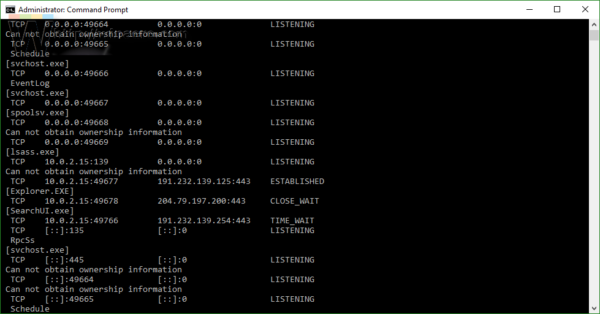It is a good idea to see which apps are consuming your bandwidth heavily. This is useful information for users who are on a limited data plan. The stats can be interesting for all users to keep them informed about which apps use the network or internet the most. In this article, we will see which tools can be used in Windows 10 to see the network usage per app without involving third party utilities.
Advertisеment
There are many ways to track network usage.
Track network usage in Windows 10 with the Settings app
To track network usage in Windows 10 with the Settings app, you need to visit a specific page. Do the following.
- Open the Settings app in Windows 10.
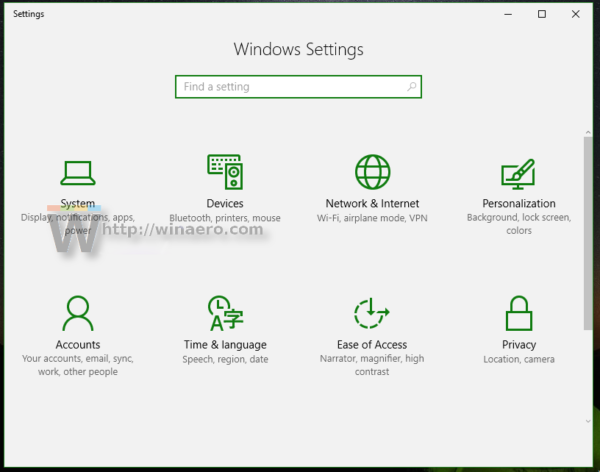
- Go to Network & Internet -> Data usage.
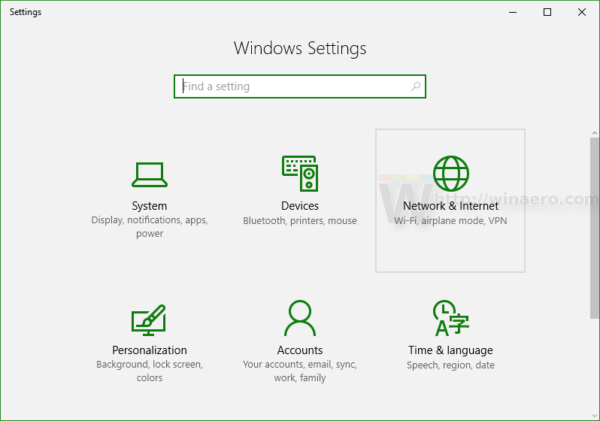
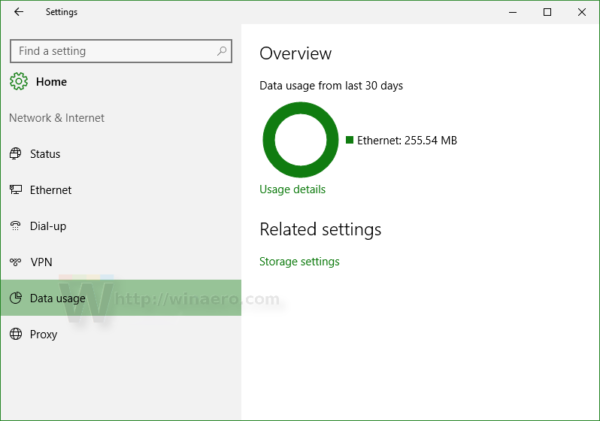
- On the right, click the link "Usage details":
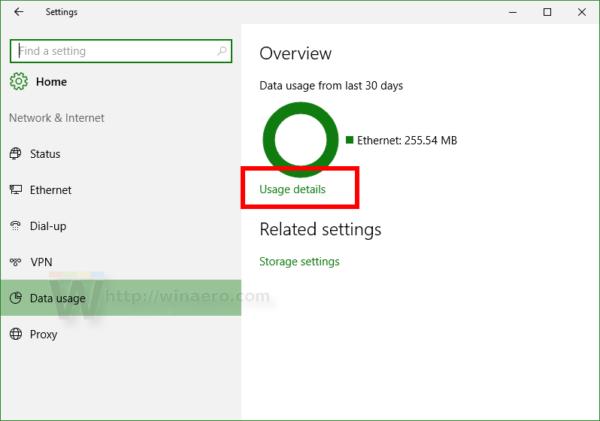
- The next page will show you the data usage collected for last 30 days:
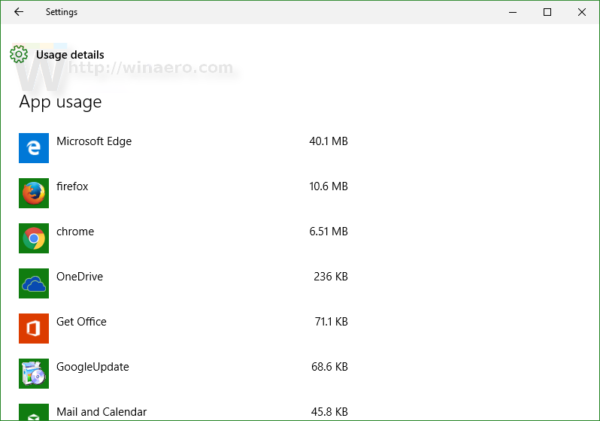
Track network usage in Windows 10 with Task Manager
The Task Manager app is also able to show you network usage stats. Unfortunately, in Windows 10, it is limited only to Universal apps because the App History tab no longer lists Desktop apps like Windows 8's Task Manager did. Users who prefer classic Desktop apps cannot use Task Manager for this purpose.
To see network usage of Universal apps through Task Manager, you need to open it on the App History tab.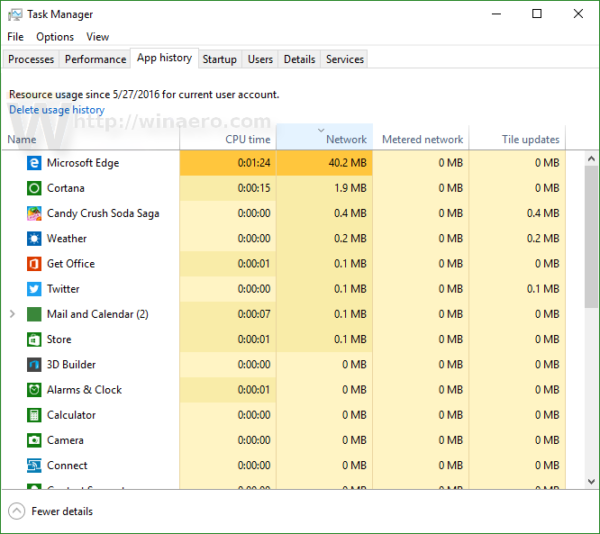
I observed that Task Manager's values are a bit different from the values shown on the 'Usage details' page of the Settings app: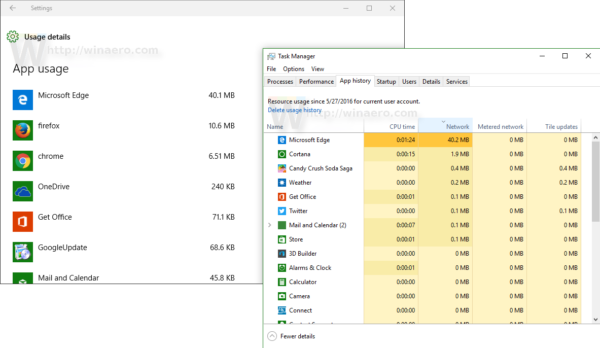
The Task Manager app shows greater traffic.
Track network usage in real time
You can use the console app, netstat, which comes bundled with Windows 10. It is able to show you which app is connected to various network locations in real time. Execute it as follows:
netstat -a
The output on my machine is as follows: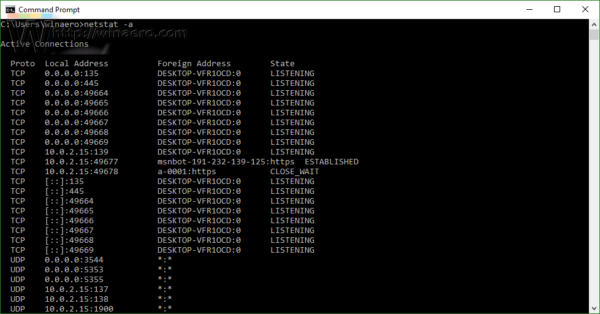
As you can see in the screenshot above, the tool resolves the DNS name for remote connection points. If you are interested in seeing the destination IP address, run it as follows:
netstat -an
You will see the remote IP addresses your PC is connected to.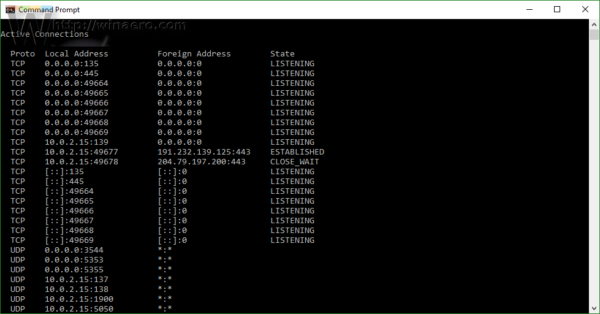
Finally, you can see with netstat which app exactly is connected to a specific address. Do it as follows:
- Open an elevated command prompt.
- In the command prompt running as Administrator, type or copy-paste the following command:
netstat -anb
Track network usage with Resource Monitor
Resource Monitor is included in Windows 7, Window 8/8.1 and Windows 10. Type: resource into the Windows Start search box and open it.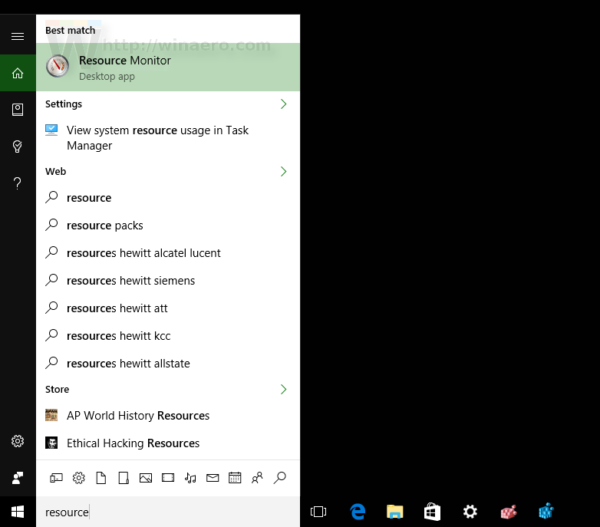
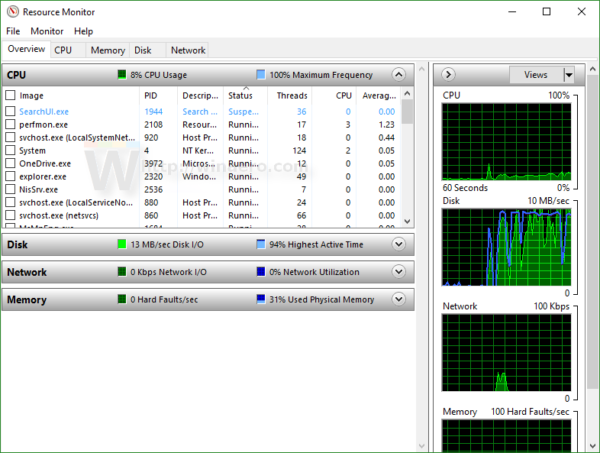 On the Overview tab of Resource Monitor, you can expand the Network section to see which processes are accessing the network.
On the Overview tab of Resource Monitor, you can expand the Network section to see which processes are accessing the network.
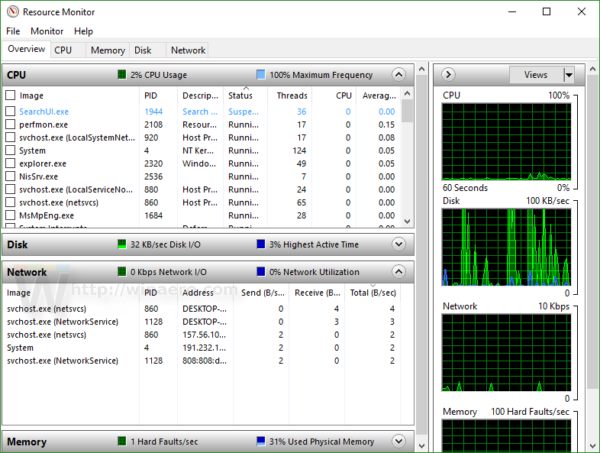 You can also switch to the Network tab so only the processes with network activity are shown and their TCP Connections as well as Listening ports.
You can also switch to the Network tab so only the processes with network activity are shown and their TCP Connections as well as Listening ports.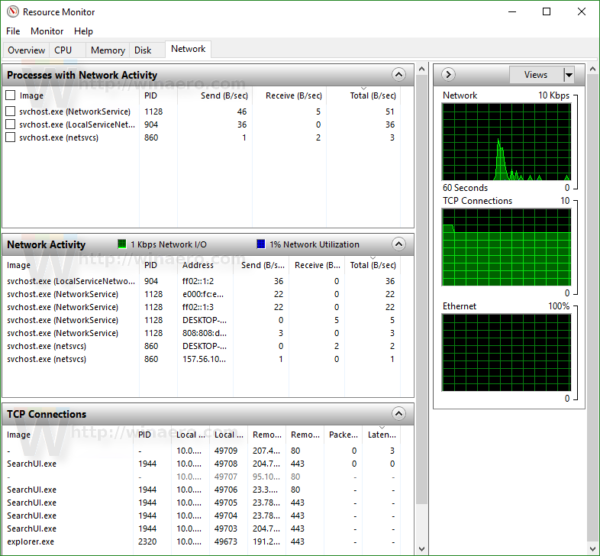
That's it. If it is not possible to use a third party tool in your environment (such as SysInternals TCPView), or if you just want to inspect your traffic quickly, you can use the methods described in this article.
How do you track your network usage in Windows? Tell us in the comments.
Support us
Winaero greatly relies on your support. You can help the site keep bringing you interesting and useful content and software by using these options:
If you like this article, please share it using the buttons below. It won't take a lot from you, but it will help us grow. Thanks for your support!
Advertisеment
